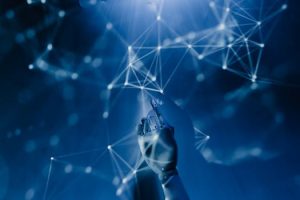Neuroscience and Learning: Latest Breakthroughs
When it comes to understanding how our brains process and retain information, the field of neuroscience plays a crucial role. As technology and research continue to advance, scientists are constantly making new breakthroughs in understanding the complex workings of the brain. These developments not only fuel our understanding of human cognition and behavior, but also have practical applications in the world of education and learning. In this article, we will explore some of the latest breakthroughs in neuroscience and how they impact our understanding of learning.
The Role of Neuroscience in Learning
Neuroscience, the study of the nervous system, has long been a cornerstone in the study of learning. As we seek to understand the underlying processes that govern how we learn new skills and information, understanding the brain is essential. By taking a closer look at how the brain processes, stores, and retrieves information, researchers are able to gain valuable insights into the most effective methods for teaching and learning.
Neuroplasticity: The Ability to Rewire Our Brains
Traditionally, it was believed that the brain’s neural connections were fixed and unchanging. However, in recent years, research has shown that the brain is capable of changing and adapting as we learn new things. This phenomenon is known as neuroplasticity.
Neuroplasticity allows our brains to create new neural pathways, strengthening existing connections and even creating new ones. This process allows us to learn new skills and information, and also explains how our brains can recover from injuries, such as a stroke or trauma.
The Importance of Sleep in Learning and Memory
Sleep has long been known to play a crucial role in our ability to learn and remember information. Recent studies in neuroscience have shed light on the specific mechanisms behind this connection.
During sleep, our brains consolidate and strengthen new memories, making them more easily retrievable. Additionally, sleep also plays a role in the proliferation of new neurons in the hippocampus, the area of the brain responsible for memory formation. This process helps to solidify new information and make it more accessible for future recall.
Practical Applications in Education
With a deeper understanding of how the brain works and how we learn, researchers and educators are finding new and innovative ways to improve the learning experience for students.
Personalized Learning
One of the most promising applications of neuroscience in education is the concept of personalized learning. By utilizing techniques such as adaptive learning software, educators are able to tailor the learning experience to each student’s individual needs and learning style.
By taking into account factors such as attention span, motivation, and previous knowledge, personalized learning can maximize a student’s potential for retaining and understanding new information.
Making Learning More Engaging
Incorporating elements of neuroscience into teaching methods can also help make the learning process more engaging and effective. For example, incorporating physical movement into lessons has been shown to stimulate the brain and increase information retention.
Sensory experiences also play a crucial role in learning, as they allow multiple areas of the brain to be activated simultaneously, creating stronger connections and enhancing memory.
The Future of Neuroscience and Learning
As technology continues to advance, so too does our understanding of the brain. With the development of tools such as brain-computer interfaces, researchers hope to gain even deeper insights into the workings of the brain and how we learn.
As our understanding of the brain evolves, the potential applications in the field of education are endless. By continuing to bridge the gap between neuroscience and learning, we can unlock the full potential of the human brain and revolutionize the way we approach education.
Conclusion
From understanding neuroplasticity to incorporating personalized learning methods, the latest breakthroughs in neuroscience have a significant impact on how we learn. By leveraging this knowledge, we can improve the learning experience for students, making it more engaging, effective, and ultimately, successful. As research in this field continues, we can look forward to even more exciting developments that will shape the future of education.










